Road Trips by a Family of Four – Grandparents, Mom, Teenage Daughter

Our first long road-trip without Amma. We carried a framed photograph of her with us throughout and she visited all the places with us, smiling from the desk of every hotel room.
This was a small road-trip, to the test the waters as it were: three of us as a family (without Amma) on the road after almost 2 years of lockdown. Around 3000 Kms by road from Mumbai to Vadodara – Somnath – Porbandar – Ranavav – Dwarka – Dholavira (Rann of Kutch) – Patan – Ahmedabad – Mumbai. NH48 from Mumbai to Vadodara was average, from Vadodara to Somnath was terrible. Long stretches of road with stones and pebbles forced us to drive at not more than 20 – 30 kmph and an 8-hour drive took 12 ½ hours. Road construction was on at several places, so diversions slowed us down even more. On the other hand, Somnath to Porbandar was a beautiful drive down the coast and at some points we saw the blue Arabian sea almost at walking distance. Porbandar to Ranavav was also very good, the roads looked freshly tarred and unused. We joined the expressway from Ranavav to Dwarka with swanky, new hotels built on either side of the expressway. The last stretch from Rapar to Dholavira was stunning, with the Salt Rann stretching endlessly on either side of the road. It could be quite eerie in the dark. The Ahmedabad-Vadodara expressway was a super time-saver on our return leg.
Cattle, especially cows, had right-of-way in Gujarat. They could be seen everywhere: outside homes, hotels, temples, on the streets, highways and dangerously, on expressways too. It was wise to drive cautiously within the state.
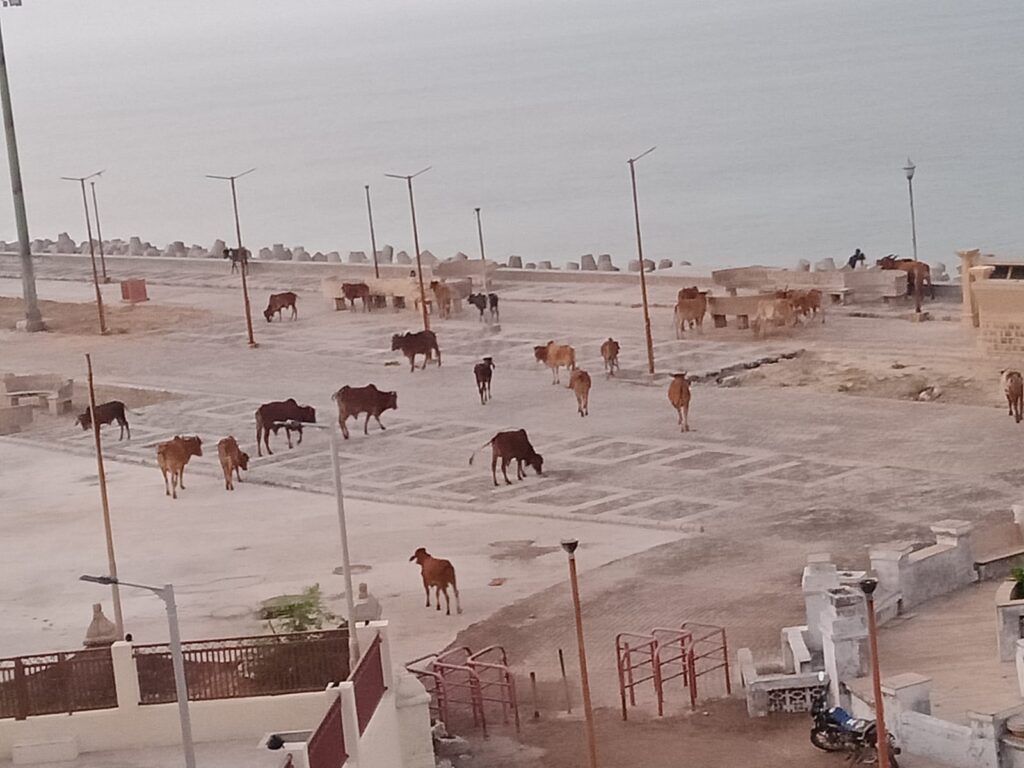
Early morning 5am on 30th October ’21, we left Mumbai for Vadodara. We hit NH48 after wriggling through heavy truck traffic on Thane-Ghodbandar road. Somehow, of all highways in India, the ones in the West seem most neglected. We stopped for superb masala chai at a drive-in café enroute and 4 hours later had breakfast at Valsad at a food court on NH48 named Sugar n Spice. On reaching Vadodara at noon, we went straight to the Fatehsingh Gaekwad Museum adjacent to the famous Laxmi Vilas Place to see the stunning paintings by Raja Ravi Verma, who resided there for a decade at the request of the Gaekwads of Baroda. We were fortunate to see the paintings of the beautiful Shakuntala, Radha sitting expectantly by the riverside, Arjuna and Subhadra and many others. Appa, who knew recognised most of the paintings, was our informal guide. It was my daughter’s first introduction to this collection, though she had seen a few earlier in the South. As I write this, I recollect the work of photographer G Venket Ram who designed a unique calendar for the year 2020 for Suhasini Ratnam’s NAAM Charitable Trust, recreating the paintings of Raja Ravi Varma with South Indian women actors and dancers to celebrate “the spirit of Indian womanhood”. They were outstanding and brought renewed interest to the original paintings. We lunched at and stayed the night at the beautiful Baroda Residency at Alkapuri.
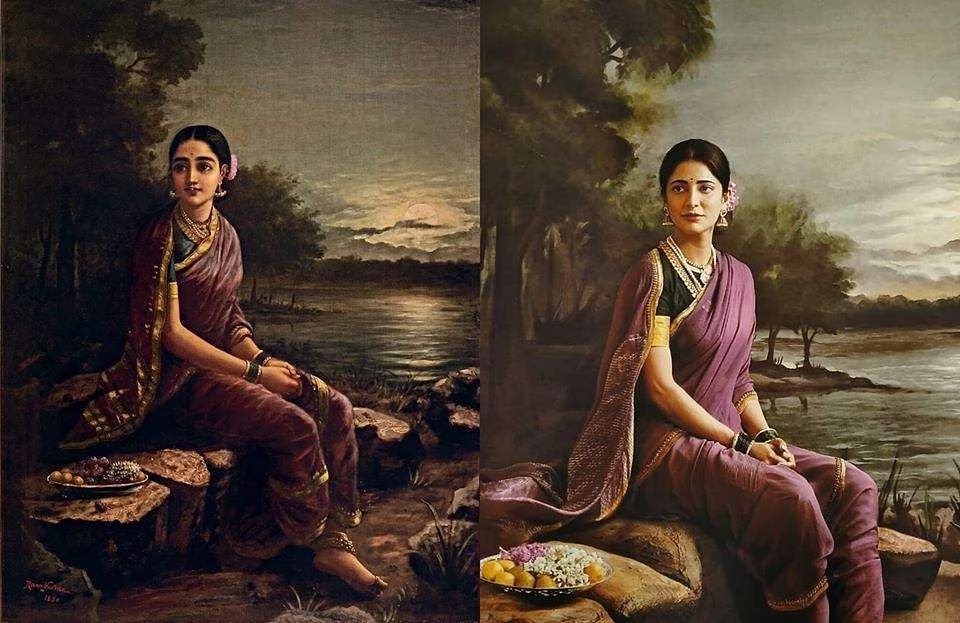
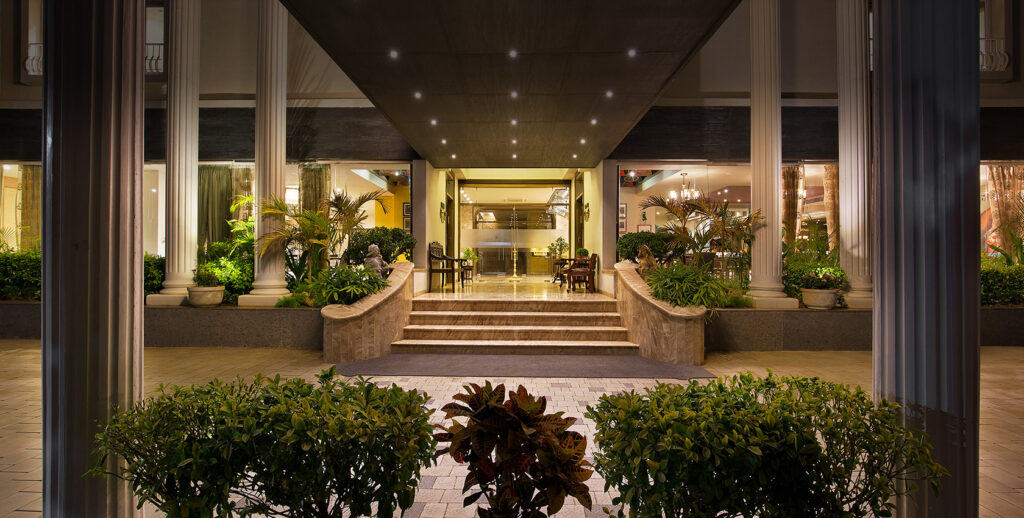
Vadodra to Somnath was a terrible drive that year – the roads were in bad condition and diversions abounded as repairs or new constructions were on. The 8-hour drive took 12 ½ hours and we reached Somnath at around 9pm. We drove straight to the temple. It was open and fortunately there was no crowd. The temple was beautifully lit and the air was cool with the sea breeze as the shrine was located just beside the Arabian sea. We walked into a huge open area after a thorough security check, which included depositing all hand baggage into a locker except for a small purse. It was very peaceful and the day’s arduous journey fell away from us leaving us in a state of tranquility. The first among the Adi Jyotirlingas, the interior of the temple was awesome to behold. The inner temple was completely covered in gold and one could well imagine how it would have been centuries ago, to have tempted Mahmud Ghazni to plunder it multiple times for its wealth. We spent an hour on the premises and then checked into our hotel Lord’s Inn for the night.
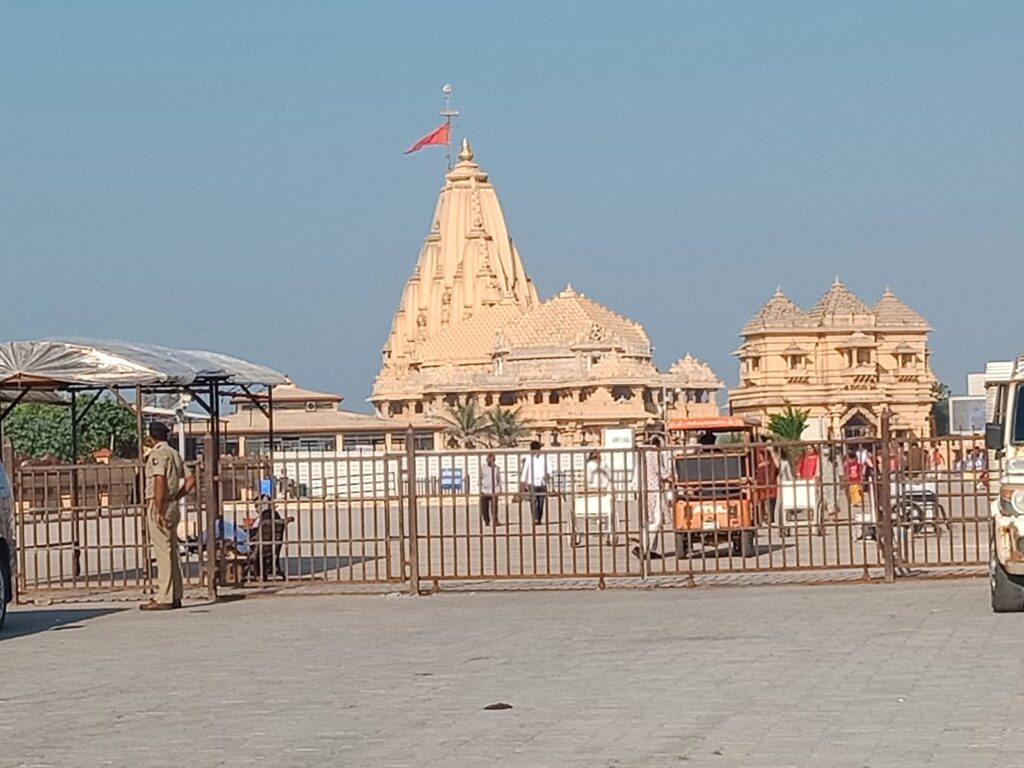
We left Somnath after breakfast and took the beautiful coast route to Porbandar, the Arabian Sea almost at arm’s length. It was a beautiful drive. We decided to give the Gandhi museum a miss and proceeded instead 17 kms further ahead to Ranavav, a small municipality on the outskirts of which was Jambavan’s Goofa, an underground, winding cave where the King of Bears Jambavan had lived with his family. Jambavan helped Sri Ram build the bridge on the sea to Lanka with his army of bears. This cave is where he is said to have fought Sri Krishna for 28 days and nights when Krishna tried to take the Syamantaka jewel from him to prove his innocence, when he was accused of stealing it by King Satrajit, who was given the jewel by Lord Surya himself. In the end, Krishna got the jewel and the girl (Jambavan’s daughter Jambavati) in marriage.
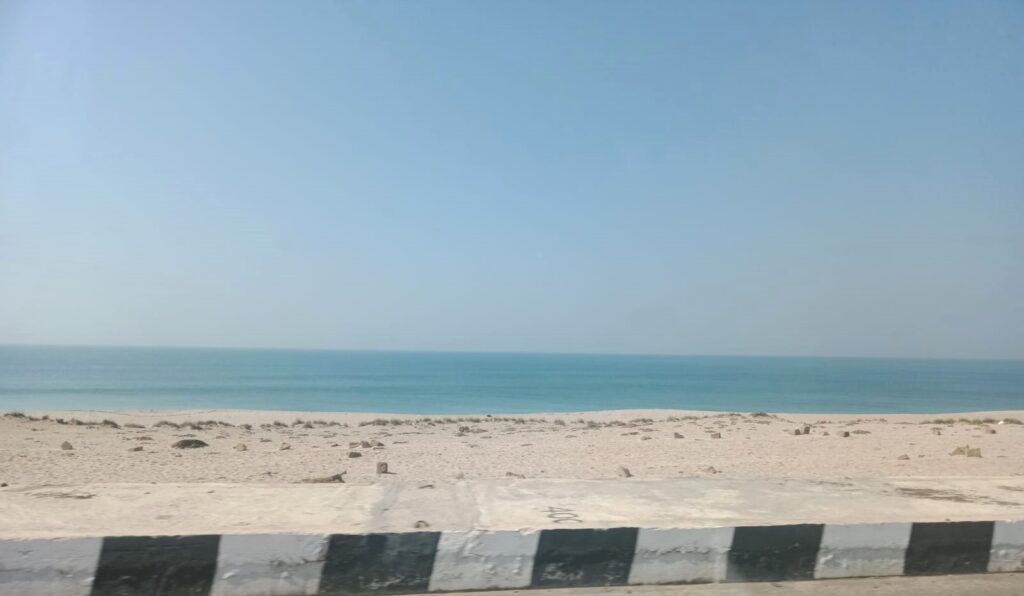
The cave was long, dark and cool. And very clean. One had to climb down steep, winding steps, around 10 feet below the ground, to reach the base of the cave. It narrowed and widened giving the impression of rooms. We saw a well; dry and strewn with coins. My daughter immediately climbed up and tossed in a few, making a wish. The cave had several tiny Shiva lingas formed by water dripping from above. It ended in an enlarged space with a mid-sized Shiva Linga and a panting of Jambavan handing over the jewel and his daughter to Krishna. Quite an experience! The entry to the cave was free. Once outside, they do request you to donate a small amount: Rs 50 or Rs. 100 and tear you a receipt for the same. The elderly could also come down to the cave with help of a rope. Appa was in his 80s and he was thrilled with the experience. The floor of the cave was a little uneven at places but smooth and cool to walk on barefoot (you had to remove your footwear before the climb down to the cave).
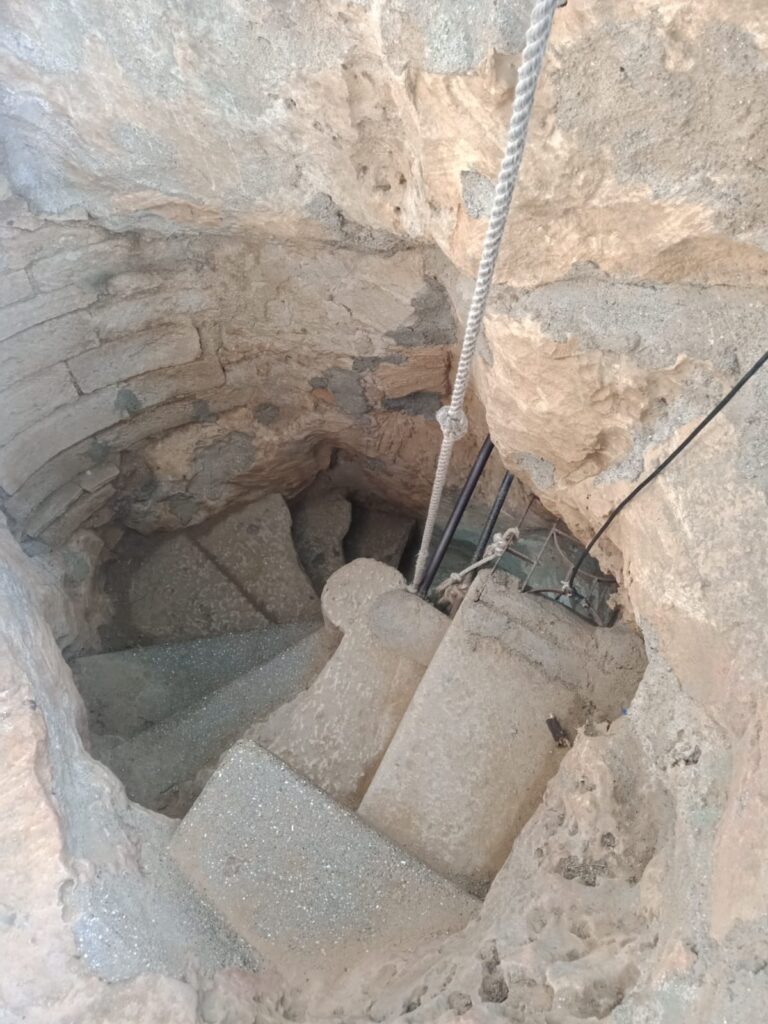
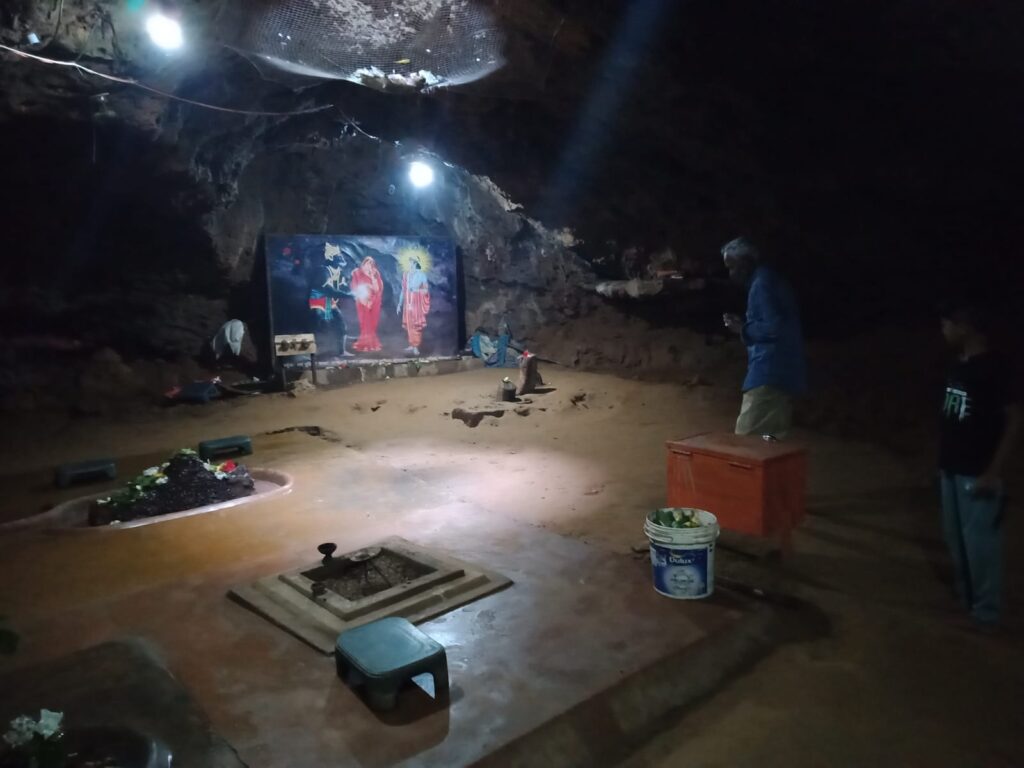
Another beautiful 1 1/2 hour drive on the NH51 to from Ranavav to Dwarka. We checked into pour hotel Lord’s Eco Inn. We had lunch and rested before our evening walk along the promenade to the Dwarkadish temple. Dwarka wore a deserted look, almost. The fear of the pandemic had not yet been overcome. There was so much construction along the sea front that the temple was lost to the visitor. One had to wind through long, narrow streets packed with living quarters on either side to finally arrive at the temple after asking for directions. It was peaceful inside the Dwarkadish temple and we completed our darshan. There were plenty of touts one can avoid though. We walked back to the hotel and it was an early light’s out for us. The next day was one of rest and relaxation. We strolled to a nearby Govinda restaurant for Gujrati thalis and pizzas.. delicious. After 4pm we walked to the beach right in front of the hotel and spent lazy hours there. My daughter spent all her time in the water while Appa sat nearby watching her play. It was very restful.
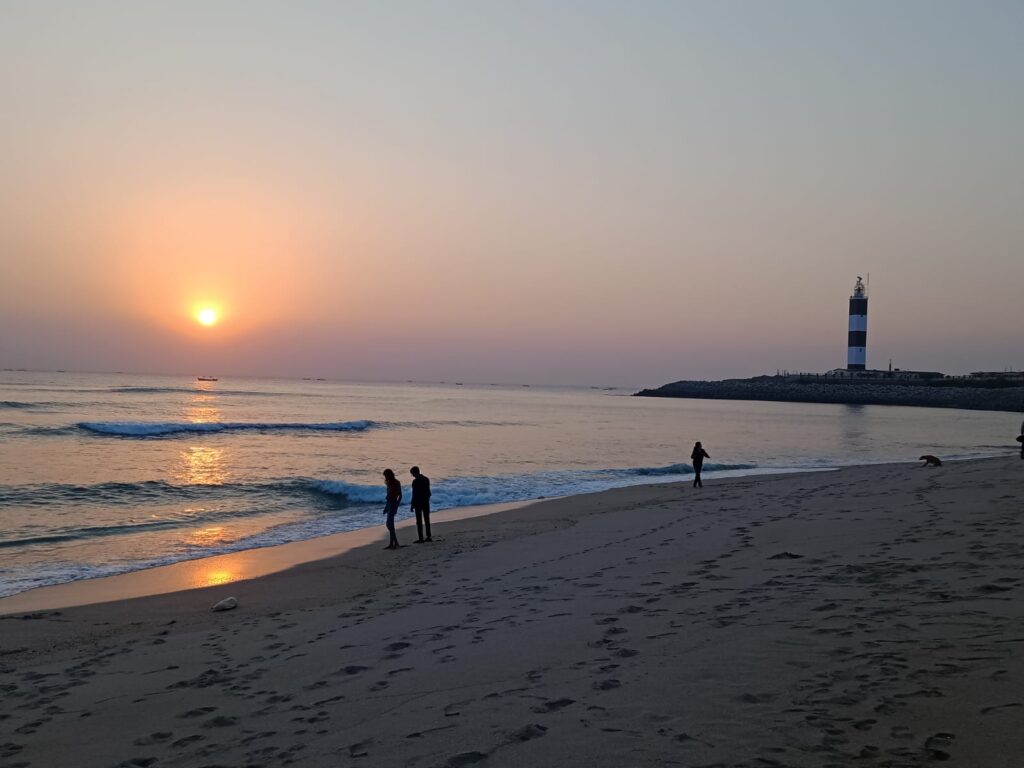
We drove on NH 151A, passing Morbi and Rapar and reaching our remote hotel Rann Resort at Dholavira, after a 10 hour journey from Dwarka the next day. It was a long, scenic drive to the Rann. The sun set swiftly, and we were yet to clearly see the salt desert we were driving through. Though we did glimpse it on either side of the lonely road, eerie and white all around. Our resort was lovely. We were booked in a tiny cottage and all meals were in the common dining hall. The meals served were simple, delicious and nutritious. We loved the place!
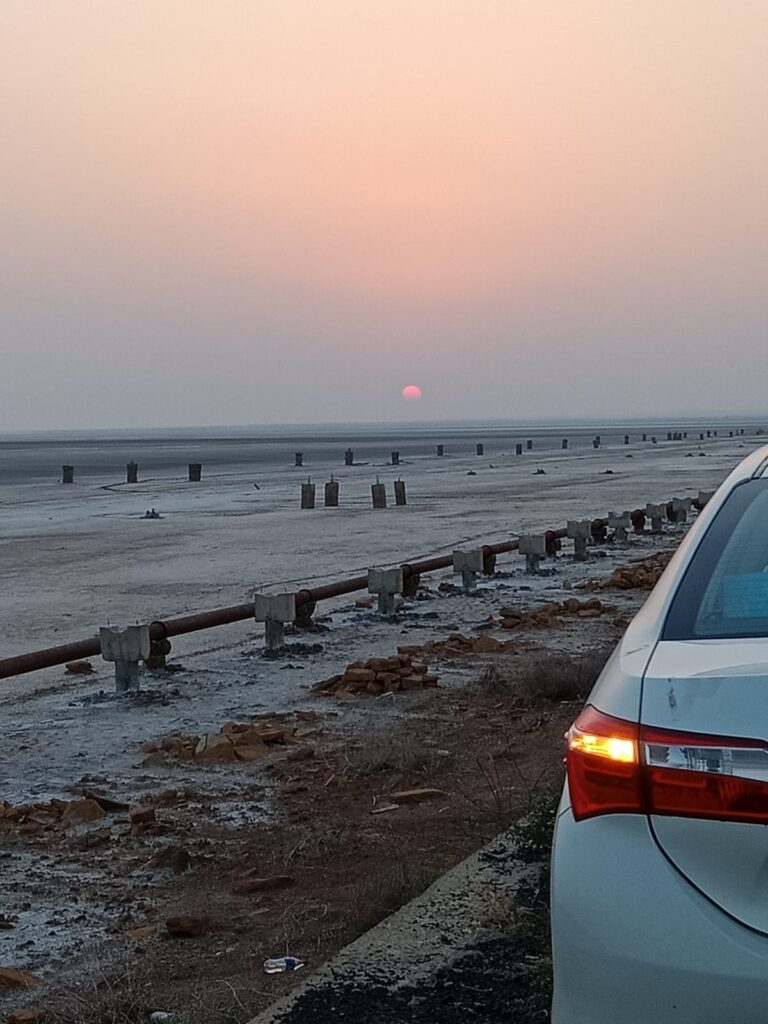
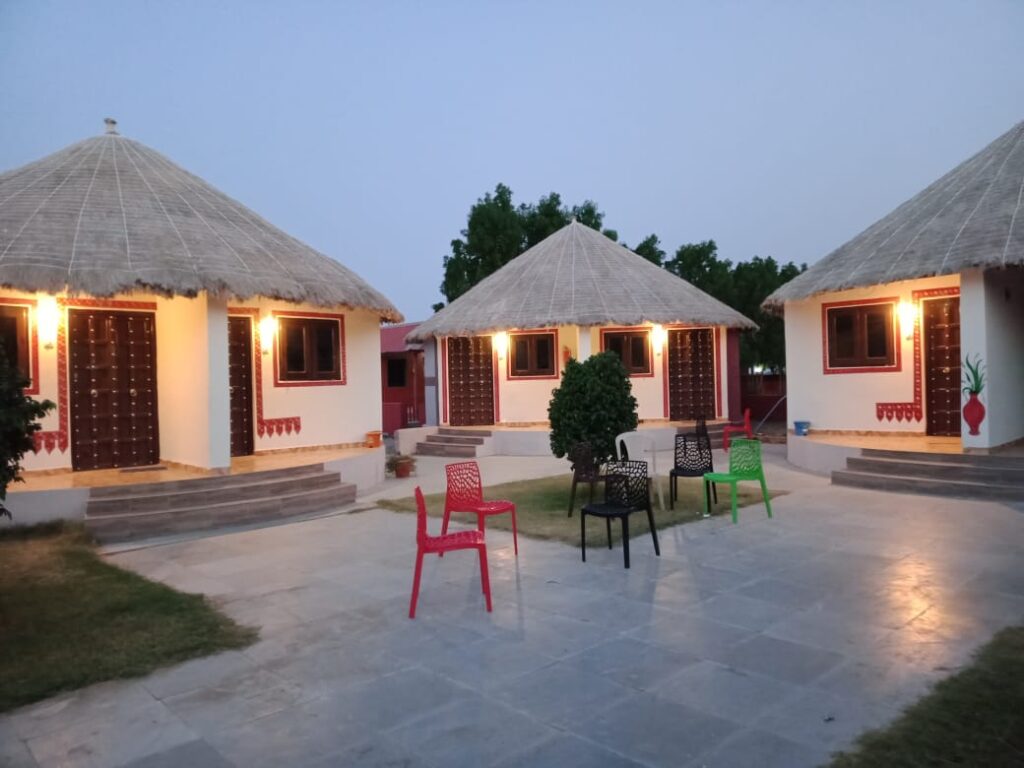
We left for the Harappan City ruins after breakfast (3kms from our resort) the next morning and hired a guide to take us around. It took us 3 hours to complete the tour, with the hot sun beating down relentlessly. What a site! It was a highly advanced civilization. Around 1500 people stayed in this fortified city of 3 levels with masterfully architected water supply and drainage system, mathematically precise housing and streets, a massive outdoor theatre and a separate external cemetery. And they were very tall… A male and female skeleton found there measured 6ft each, we were told. This was between 3000 and 1500 BCE, 5000 years ago. Their 18ft broad walls were made seamlessly with stones fit together reminding one of the pyramids of Egypt, though of a much smaller size. If the Egyptian and Roman civilizations represented power and conquest, the Indus Valley represented culture ad refinement. The people were inclined towards mathematics and astronomy, as derived from the way the city was built. The lack of documentation of the Indus valley civilisation was a major drawback as compared to other Western civilisations.. There was a museum within the complex showcasing artefacts from the site. We were thrilled to have been part of this experience. Appa walked the whole time with us, not missing a single detail. We were immensely proud of him. We rested at the resort, had lunch and at 5pm left for the sunset point at the Great Rann, the 25000 km salt marsh bordering with Sind in Pakistan, a salt marsh in the Thar desert! We drove 10kms and waited for the sun to set. A beautiful sight!
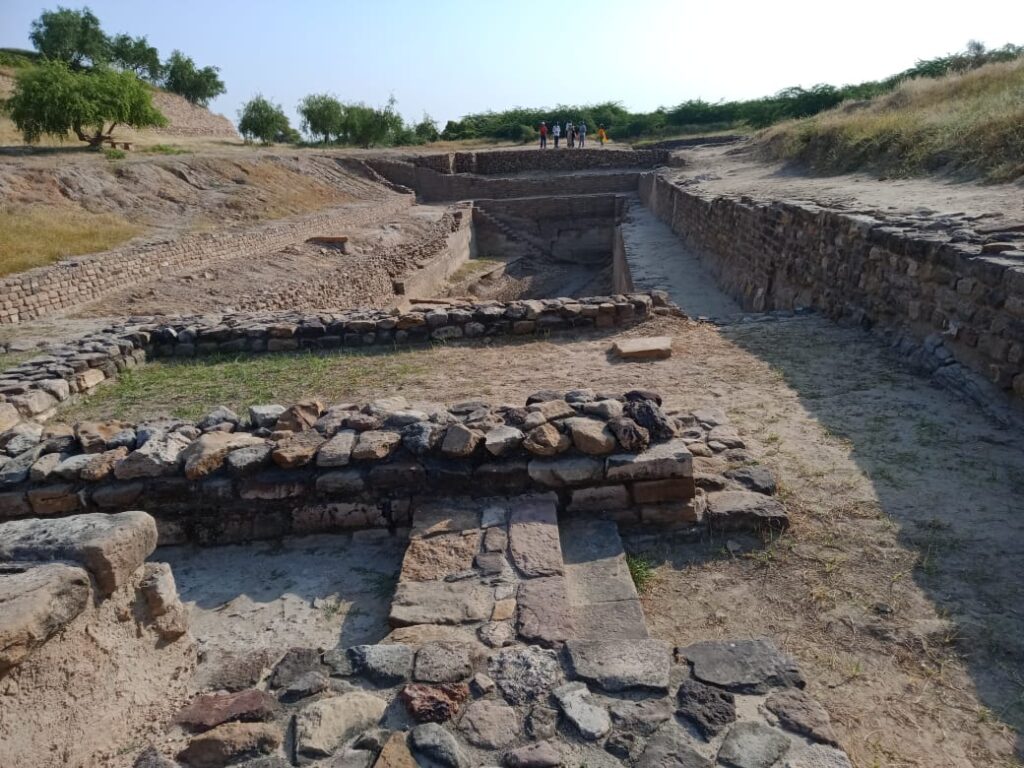
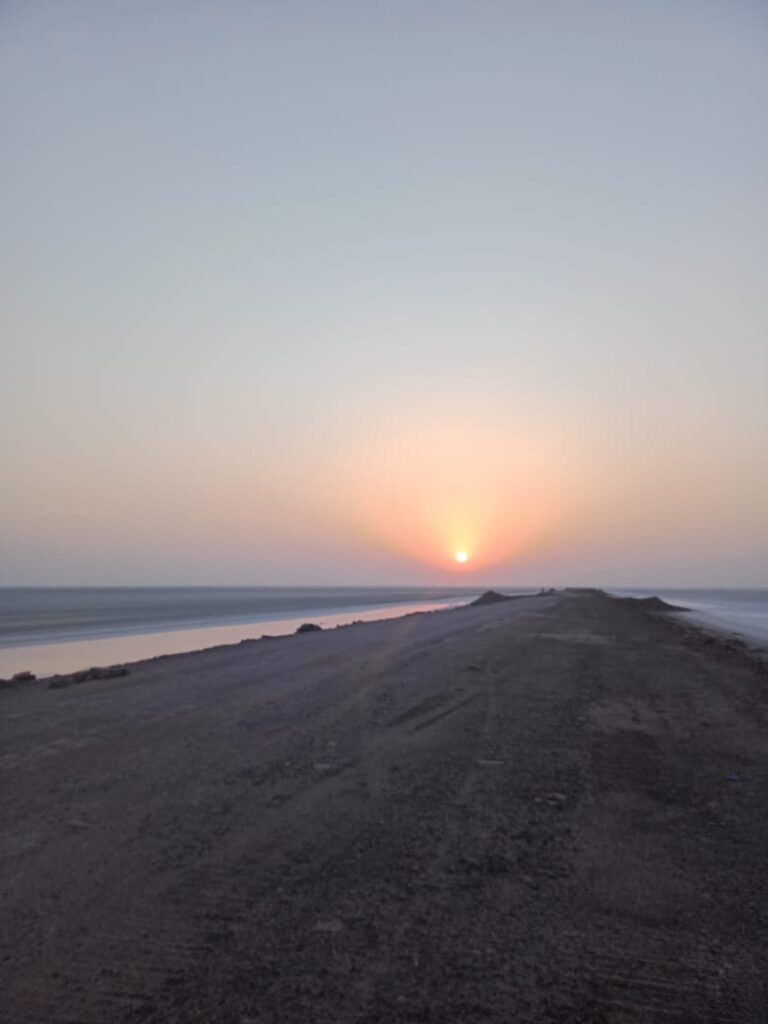
The route from Dholavira to Ahmedabad with a pit-stop at Patan to see the Rani-ki-Vav (Queen’s step-well) was well worth the detour. The step-well had multiple levels and beautiful carvings. It not only provides drinking water but also acts as a shade from the heat. My daughter went right down to the bottom of the well and came back thrilled and very impressed. The place was over-run with tourists on their Diwali holidays. We didot stop at Modhera to see the Sun Temple, as planned earlier but drove on to Ahmedabad.
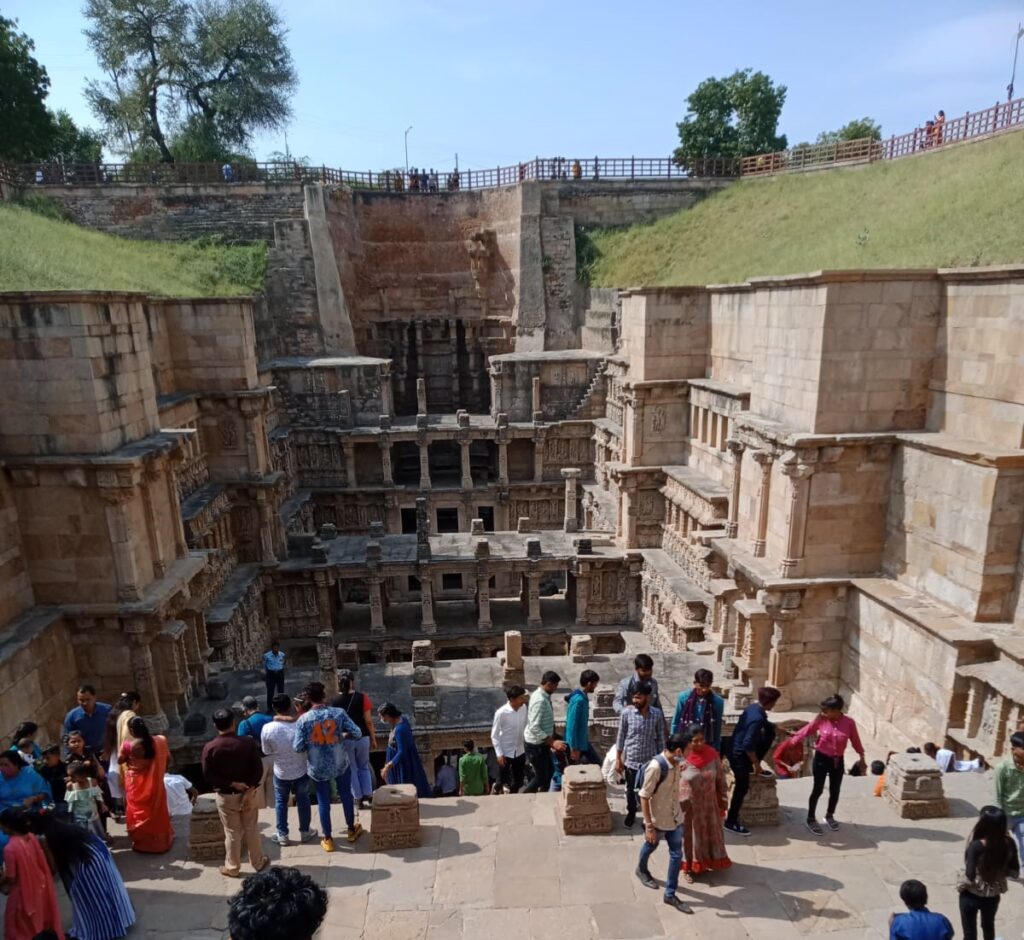
We were to stay on for a day at Ahmedabad, but on reaching the hotel we were told the whole city would be shut down for 5 days inlieu of Diwali. So we departed the very next morning to our home in Mumbai, thankful and grateful for all we had seen and experienced. Appa, as always, went to the temple the next day and broke a coconut in gratitude for Ganesha.
Leave a Reply